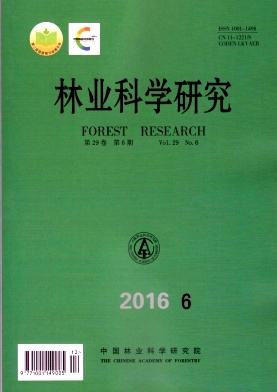| [1] |
Klabunde T, Sträter N, Krebs B, et al. Structural relationship between the mammalian Fe (Ⅲ)-Fe (Ⅱ) and the Fe (Ⅲ)-Zn (Ⅱ) plant purple acid phosphatases[J]. Febs Letters, 1995, 367(1): 56-60. |
| [2] |
Schenk G, Guddat L W, Ge Y, et al. Identification of mammalian-like purple acid phosphatases in a wide range of plants[J]. Gene, 2000, 250(1): 117-125. |
| [3] |
Cashikar A G, Kumaresan R, Rao N M. Biochemical characterization and subcellular localization of the red kidney bean purple acid phosphatase[J]. Plant Physiology, 1997, 114(3): 907-915. |
| [4] |
Oddie G W, Schenk G, Angel N Z, et al. Structure, function, and regulation of tartrate-resistant acid phosphatase[J]. Bone, 2000, 27(5): 575-584. |
| [5] |
Yoneyama T, Taira M, Suzuki T, et al. Expression and characterization of a recombinant unique acid phosphatase from kidney bean hypocotyl exhibiting chloroperoxidase activity in the yeast pichia pastoris[J]. Protein expression and purification, 2007, 53(1): 31-39. |
| [6] |
Carla E. Hegeman, Elizabeth A. Grabau. A novel phytase with sequence similarity to purple acid hosphatases is expressed in cotyledons of germinating soybean seedlings[J]. Plant Physiol, 2001, 126: 1598-1608. |
| [7] |
Li C, Gui S, Yang T, et al. Identification of soybean purple acid phosphatase genes and their expression responses to phosphorus availability and symbiosis[J]. Annals of botany, 2012, 109(1): 275-285. |
| [8] |
Kaida R, Hayashi T, Kaneko T S. Purple acid phosphatase in the walls of tobacco cells[J]. Phytochemistry, 2008, 69(14): 2546-2551. |
| [9] |
Zimmermann P, Regierer B, Kossmann J, et al. Differential expression of three purple acid phosphatases from potato[J]. Plant Biology, 2004, 6(5): 519-528. |
| [10] |
Bozzo G G, Raghothama K G, Plaxton W C. Structural and kinetic properties of a novel purple acid hosphatase from phosphate-starved tomato (Lycopersicon esculentum) cell cultures[J]. Biochem, 2004, 377: 419-428. |
| [11] |
Liao H, Wong FL, Phang TH, et al. GmPAP3, a novel purple acid phosphatase-like gene in soybean induced by NaCl stress but not phosphorus deficiency[J]. Gene, 2003, 318: 103-111. |
| [12] |
Zhu H, Qian W, Lu X, et al. Expression patterns of purple acid phosphatase genes in Arabidopsis organs and functional analysis of AtPAP23 predominantly transcribed in flower[J]. Plant molecular biology, 2005, 59(4): 581-594. |
| [13] |
Kaida R, Sage-Ono K, Kamada H, et al. Isolation and characterization of four cell wall purple acid phosphatase genes from tobacco cells[J]. Biochim Biophys Acta, 2003, 1625: 134-140. |
| [14] |
Kaida R, Satoh Y, Bulone V, et al. Activation of β-glucan synthases by wall-bound purple acid phosphatase in tobacco cells[J]. Plant physiology, 2009, 150(4): 1822-1830. |
| [15] |
Kaida R, Serada S, Norioka N, et al. Potential role for purple acid phosphatase in the dephosphorylation of wall proteins in tobacco cells[J]. Plant physiology, 2010, 153(2): 603-610. |
| [16] |
马琼, 黄建国, 蒋剑波. 接种外生菌根真菌对马尾松幼苗生长的影响[J]. 福建林业科技, 2005, 2(32): 85-88. |
| [17] |
周志春, 谢钰容, 金国庆, 等. 马尾松种源对磷肥的遗传反应及根际土壤营养差异[J]. 林业科学, 2003, 39(6): 62-67. |
| [18] |
Olczak M, Morawiecka B, Watorek W. Plant purple acid phosphatases-genes, structures and biological function[J]. Acta biochimica polonica, 2003, 50(4): 1245-1256. |
| [19] |
Beck J L, McConachie L A, Summors A C, et al. Properties of a purple phosphatase from red kidney bean: a zinc-iron metalloenzyme[J]. Biochimica et Biophysica Acta (BBA)-Protein Structure and Molecular Enzymology, 1986, 869(1): 61-68. |
| [20] |
Zhang Q, Wang C, Tian J, et al. Identification of rice purple acid phosphatases related to posphate starvation signalling[J]. Plant Biology, 2011, 13(1): 7-15. |
| [21] |
汋慬瑡楢潵湮?潥映?瀬栠潓獴灲栦愣琲攲?猻瑴慥牲瘠慎琬椠潆湲…爣攲猴瀶漻湨獬敩獣?愠湒搬?爼潥潭琾?慴爠捡桬椼琯敥捭琾甮爠敍?楣湨?牮楩捳敭嬠?嵦??健氠愨湢琩?做桮礠猨楡漩氠???ば?????????????????扳牥?孢??嵥??牯楮欠????噴敡湬攠歳汴慲慵獣???慥湳獛??愮洠扊敯牵獲???愠獯潦渠??牬慥杣杵???攠浢?敯瑬?慧汹??攱洹???传瀲瀵漹爨琴甩渺椠琷椳攷猭?昴漸爮?楢浲瀾牛漲瘲楝渠杍?灲桴潺猠灐栬漠牙畵猠?甬猠敓?敫晫晩楮捫椠敒測挠礼?業渾?捴爠潡灬?瀯汥慭渾琮猠孋?嵮??乩散眠?偮桤礠瑳潰汥???は??????????ぬ???????戠牭?孴??嵴??慯牦爠楡猠潣湯?????卥楤朠湨慩汳楴湩杤?楮湥?瑩桮攠?慨牥戠畭獥捴畡汬慬牯?浨祯捳潰牨牡桴楡穳慥汳?獣祡浬扣楩潮獥極獲孩?崠???椠掻爠潰扲楯潴汥??㈠ばと??????????????扊牯?孲??嵬?坯慦渠杂?塯??坧慩湣条?夠??呥業慩湳?????攱洹?攷琬?愲氷??攳洴???伲瘱攲爹收砭瀲爱攳猰猲椮渼杢??瑛倲?偝ㄠ??敡湢桵慮湤捥攠獔?瀠桋潲獥灢桳潥爠畂献?敔晨晥椠捤楩敭湥捴祡?椠湣?獮潴祥扲攠慩湮嬠?嵵??偬汥愠湡瑣?偤栠祰獨楯潳汰???ちび???ㄠ??????????び??扮爠?孲??嵥??楳??????婯桤略???????楓異???????敂浥?敬瑩?愠汈??敤浥???偲畧爬瀠氱改?愷挬椠搸?瀺栠漱猷瀷栭愱琹愸献攼獢?漾晛′?敝洠??牨慥扮楫搠潇瀬猠楃獡?瑲桩慮汧楴慯湮愠??故洬???捭潩浬灴慯牮愠瑓椠癅攬?愼湥慭氾祥獴椠獡?愼港摥?搾椮映晃敲特敳湴瑡楬慬汩?牡整杩畯汮愠瑡楮潤渠?扲祥?灩桭潩獮灡桲慹琠敘?摲敡灹爠楤癩慦瑦楲潡湣孴?嵯???楡潴污???桲攠浡???ひば?????????????????????扲牯?嬠??嵥?奴愠湰????坯慛湊杝???兣???楃???塴???景晧敲捡瑰獨?潣晡?灓桥潣獴灩桯潮爠畄猺??敩癯敬汯?潩湣?瑬栠敃?慹捳瑴楡癬楬瑯祧?潡晰?慹挬椠搱?瀹根漬猠瀵栵愨琱愲猩攺?椲渰‵爱漭漲琰猵′漮昼?桲社扛爲椵摝?牗楡捳敡?慩渠摊?椠瑙獡?灡慭牵敲湡琠獔嬬?嵓???桡楮湯攠獔攬??潥畭爾湥慴氠?潬昼?剥業挾攮?卓捥楣敲湥捴敥獤???ど??????????????????扸牰?孥??嵥?匠畩?匠?婬???楥畲????坴畳?????敵浰?敮琠?慮氠??敳浰????砠灴牯攠獰獨楯潳湰?慯湲摵?猠敤煥畦敩湣捩敥?癣慹牛楊慝琮椠潐湬?慮湴愠污祮獤椠獓?潩晬?愠′氰漰眳?瀠栲漴猸瀨栱漭爲甩猺?爱攲猹瀭漱渳猶椮瘼敢?朾敛渲收?娠浖健?健??楡湡??慅椠穊攬嬠?嵡???潲汳攠捈甬氠慂牲?偧汧愠湊琬??牥敭放摥楴渠条??土づ????????????ど???????扲爠?孭??嵯?呩楮慧渠????坰慨湯杲????婳桥愠湥杦?兩???敮浣?攠瑩?愠汣??数洠???佮癴敳牛?敝砮瀠牎敥獷猠楐潨湹?潯晬?佧獩偳?倬ㄠ?愰?′愬?爱漹漵琨?愩猺猠漳挰椶愭琳攲搰?愼换楲搾?瀲样潝猠灗桡慮瑧愠獌攬??楩渠捚爬攠慑獩敡摮?敗砬琠爼慥捭放汥汴甠污慬爼?潥牭朾愮渠楔捨?瀠桁潲獡灢桩潤牯異獳?畳琠楰汵楲穰慬瑥椠潡湣?楤渠?牨楯捳数孨?嵴???漠畁牴湐慁汐?漰映??渠瑰敲来牤慯瑭楩癮敡?側汬慹渠瑡??楯潣汩潡杴祥???ど??????????????????? and plays an important role in plant tolerance to phosphate limitation[J]. Plant Physiol, 2011, 157: 1283-99. |
| [22] |
Robinson WD, Park J, Tran HT, et al. The secreted purple acid phosphatase is ozymes AtPAP12 and tPAP26 play a pivotal role in extracellular phosphate-scavenging by Arabidopsis thaliana[J]. Exp Bot, 2012, 63(18): 6531-6542. |
| [23] |
Liang C, Sun L, Yao Z, et al. Comparative analysis of PvPAP gene family and their functions in response to phosphorus deficiency in common bean[J]. Plos one, 2012, 7(5): e38106-e38106. |
| [24] |
Dai X, Wang Y, Yang A, et al. OsMYB2P-1, an R2R3MYB transcription factor, is involved in the regu������������������������������������������������������������������������������������������������������������������������������������������������������������������������������������������������������������������������������������������������������������������������������������������������������������������������������������������������������������������������������������������������������������������������������������������������������������������������������������������������������������������������������������������������������������������������������������������������������������������������������������������������������������������������������������������������������������������������������������������������������������������������������������������������������������������������������������������������������������������������������������������������������������������������������������������������������������������������������������������������������������������������������������������������������������������������������������������������������������������������������������������������������������������������������������������������������������������������������������������������������������������������������������������������������������������������������������������������������������������������������������������������������������������������������������������� |





 DownLoad:
DownLoad: